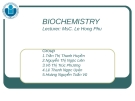
Indigestion
-
Many enzymes are added to grain feeds in order to convert some of the indigestible carbohydrates acting only as dietary fiber to accessible energy sources. amylases and glycases
 24p
24p  zingzing09
zingzing09
 21-10-2012
21-10-2012
 83
83
 9
9
 Download
Download
-
Helicobacter pylori Eradication H. pylori eradication is clearly indicated only for peptic ulcer and mucosaassociated lymphoid tissue gastric lymphoma. The utility of eradication therapy in functional dyspepsia is less well established
 6p
6p  ongxaemnumber1
ongxaemnumber1
 29-11-2010
29-11-2010
 70
70
 3
3
 Download
Download
-
Other Causes Alkaline reflux esophagitis produces GERD-like symptoms in patients who have had surgery for peptic ulcer disease. Opportunistic fungal or viral esophageal infections may produce heartburn or chest discomfort but more often cause odynophagia. Other causes of esophageal inflammation include eosinophilic esophagitis and pill esophagitis. Biliary colic is in the differential diagnosis of dyspepsia, but most patients with true biliary colic report discrete episodes of right upper quadrant or epigastric pain rather than chronic burning discomfort, nausea, and bloating.
 5p
5p  ongxaemnumber1
ongxaemnumber1
 29-11-2010
29-11-2010
 56
56
 3
3
 Download
Download
-
Gastrointestinal Motor Stimulants Drugs that stimulate gastric emptying are indicated for gastroparesis (Table 39-2). Metoclopramide, a combined 5-HT4 agonist and D2 antagonist, exhibits efficacy in gastroparesis, but antidopaminergic side effects limit its use in 25% of patients. Erythromycin, a macrolide antibiotic, increases gastroduodenal motility by action on receptors for motilin, an endogenous stimulant of fasting motor activity. Intravenous erythromycin is useful for inpatients with refractory gastroparesis; however, oral forms also have some utility.
 5p
5p  ongxaemnumber1
ongxaemnumber1
 29-11-2010
29-11-2010
 81
81
 3
3
 Download
Download
-
Disordered gut sensorimotor function also commonly causes nausea and vomiting. Gastroparesis is defined as a delay in emptying of food from the stomach and occurs after vagotomy, with pancreatic adenocarcinoma, with mesenteric vascular insufficiency, or in systemic diseases such as diabetes, scleroderma, and amyloidosis. Idiopathic gastroparesis occurring in the absence of systemic illness may follow a viral prodrome, suggesting an infectious etiology.
 5p
5p  ongxaemnumber1
ongxaemnumber1
 29-11-2010
29-11-2010
 72
72
 3
3
 Download
Download
-
Table 39-3 Alarm Symptoms in GERD Odynophagia Unexplained weight loss Recurrent vomiting Occult or gross gastrointestinal bleeding Jaundice Palpable mass or adenopathy Family history of gastrointestinal malignancy Upper endoscopy is performed as the initial diagnostic test in patients with unexplained dyspepsia who are 55 years old or have alarm factors because of the elevated risks of malignancy and ulcer in these groups.
 5p
5p  ongxaemnumber1
ongxaemnumber1
 29-11-2010
29-11-2010
 70
70
 3
3
 Download
Download
-
Gastric Motor Dysfunction Disturbed gastric motility is purported to cause acid reflux in some cases of indigestion. Delayed gastric emptying is also found in 25–50% of functional dyspeptics. The relation of these defects to symptom induction is uncertain; many studies show poor correlation between symptom severity and the degree of motor dysfunction. Impaired gastric fundus relaxation after eating may underlie selected dyspeptic symptoms like bloating, nausea, and early satiety.
 5p
5p  ongxaemnumber1
ongxaemnumber1
 29-11-2010
29-11-2010
 65
65
 3
3
 Download
Download
-
Diagnostic Testing For intractable symptoms or an elusive diagnosis, selected diagnostic tests can direct clinical management. Electrolyte replenishment is indicated for hypokalemia or metabolic alkalosis. Detection of iron-deficiency anemia mandates a search for mucosal injury. Pancreaticobiliary disease is indicated by abnormal pancreatic enzymes or liver biochemistries, whereas endocrinologic, rheumatologic, or paraneoplastic etiologies are suggested by specific hormone or serologic testing.
 7p
7p  ongxaemnumber1
ongxaemnumber1
 29-11-2010
29-11-2010
 84
84
 3
3
 Download
Download
-
Harrison's Internal Medicine Chapter 39. Nausea, Vomiting, and Indigestion Nausea, Vomiting, and Indigestion: Introduction Nausea is the subjective feeling of a need to vomit. Vomiting (emesis) is the oral expulsion of gastrointestinal contents resulting from contractions of gut and thoracoabdominal wall musculature. Vomiting is contrasted with regurgitation, the effortless passage of gastric contents into the mouth. Rumination is the repeated regurgitation of stomach contents, which may be rechewed and reswallowed.
 5p
5p  ongxaemnumber1
ongxaemnumber1
 29-11-2010
29-11-2010
 104
104
 5
5
 Download
Download
-
Differential Diagnosis Nausea and vomiting are caused by conditions within and outside the gut as well as by drugs and circulating toxins (Table 39-1).
 5p
5p  ongxaemnumber1
ongxaemnumber1
 29-11-2010
29-11-2010
 77
77
 4
4
 Download
Download
CHỦ ĐỀ BẠN MUỐN TÌM






















